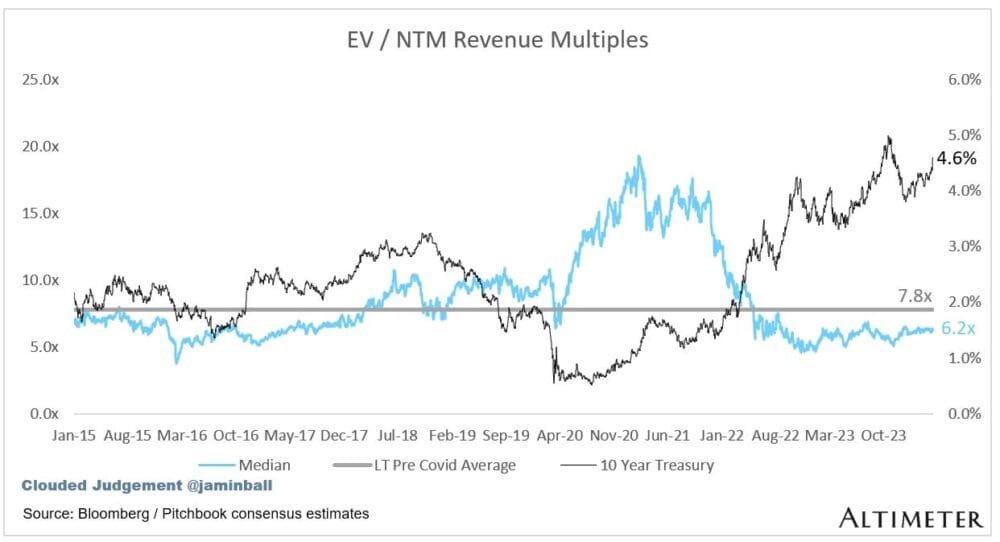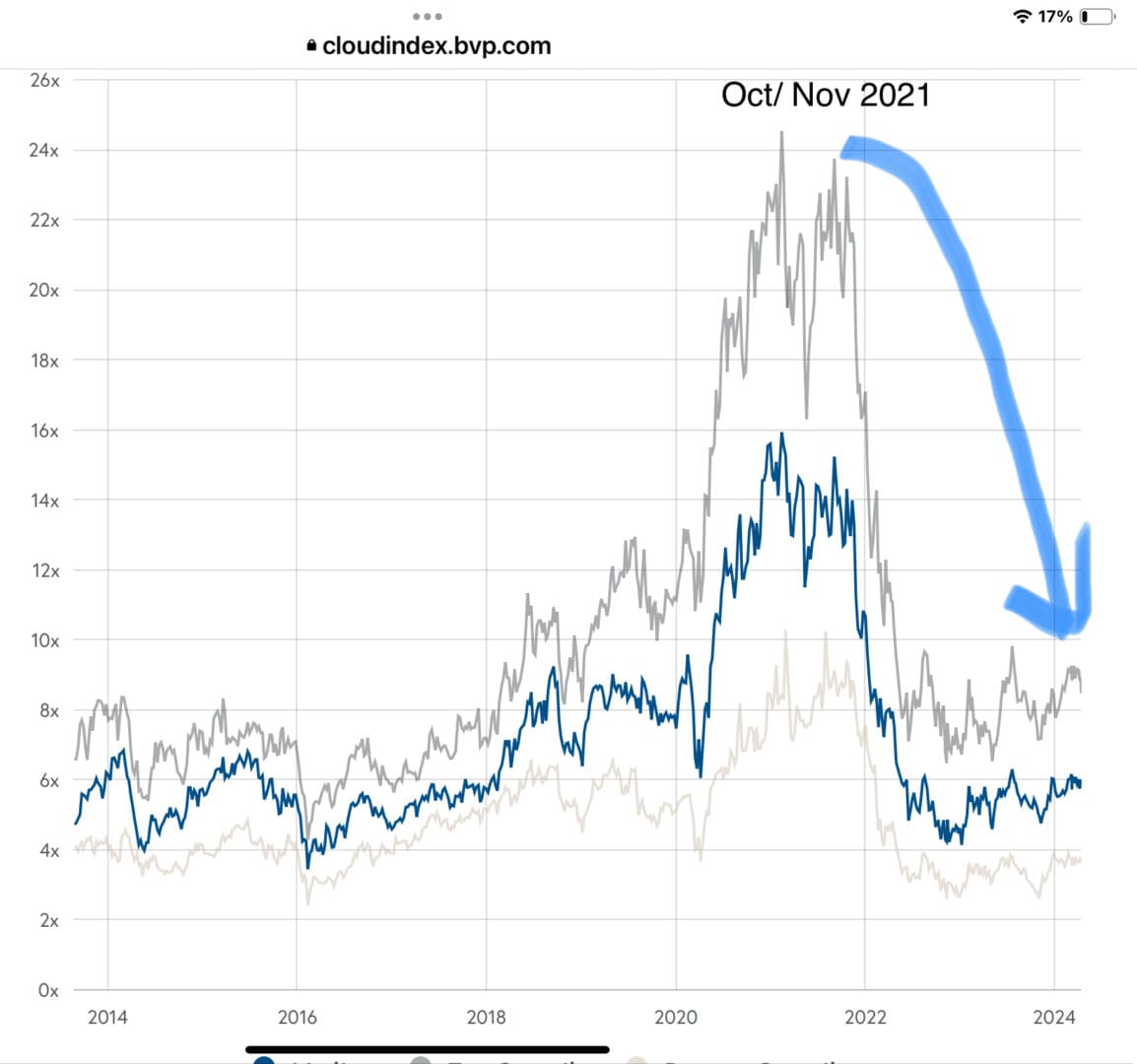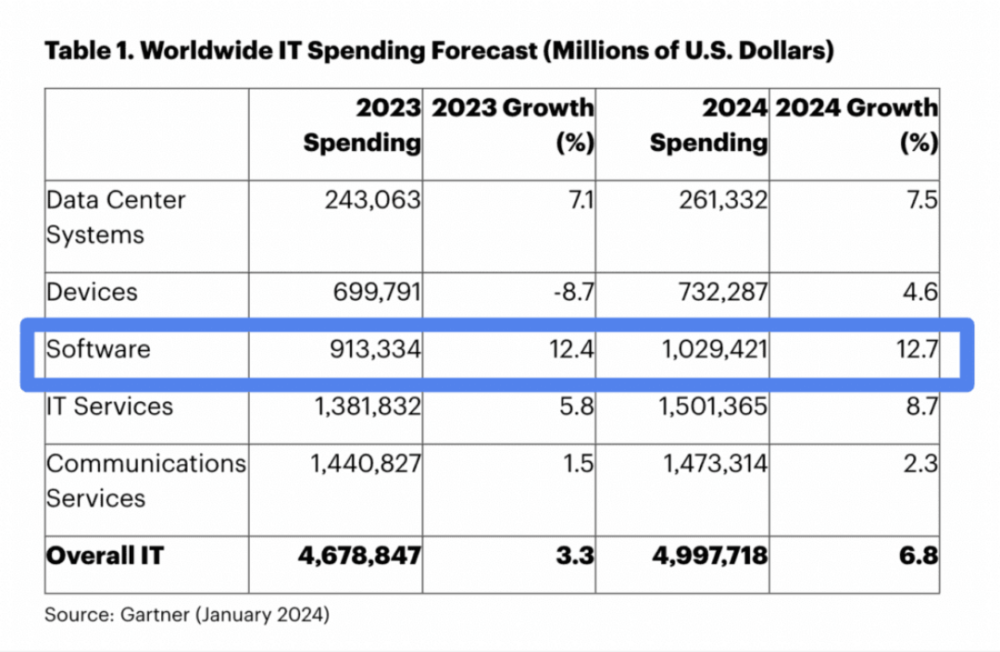There’s a bit of a malaise hanging over the SaaS world today. AI excitement obscures it a bit, but it’s there.
A feeling that:
- Growth has slowed everywhere (true overall. The average public SaaS company is now growing less than 20% a year!)
- Sales is so much harder, and the old playbooks aren’t working well
- Folks don’t want to work as hard anymore
- There are even more competitors than ever
- Every leader is competing with each other, trampling on their turf (Gong v. Outreach v. Salesloft v. Zoom, or Rippling vs. Deal vs. Gusto vs ….)
- Layoffs have become normalized
- Customers are angry from endless price increases and upsells
- Budgets are being cut to find budget for AI (true)
- Every renewal is not just a battle but a downgrade
- Profitability is all that matters
- VCs have checked out in a lot of non-AI SaaS
- A feeling we’re in a massive “downturn”, even as the overall U.S. economy still is booming
- A feeling products have fallen out of product-market fit, or at least, become more “nice to haves” vs. must haves
- Even healthy customers scrutinizing budgets in ways they haven’t in many years
- Happy customers churning simply because they have to cut apps
- A feeling things actually won’t ever get any better or easier in SaaS
The list goes on 🙂
There’s a lot of truth in all of this. What I think is really fueling it though is the length of the “downturn” in SaaS buying, in SaaS multiples, and SaaS valuations has been the longest of my career. Going on 3 Years:
The downturns in 2008, 2016 even were harder. They felt like the end of the world. But they were shorter. Even the SaaS downturn of 2008-2009, when the global economy almost shut down, was shorter. SaaS actually came back faster than we realized in retrospect then.
This downturn that started right around Oct-Nov 2021 is now in Year 3. Some of us didn’t feel it until later, but that’s when it started. And that’s a long time ago now.
That’s the source of the real malaise I think.
That and the fact that revenue multiples are still not just below the peak of the Go-Go Times of 2021, but about as low as they’ve been since 2017. Roughly speaking, the lower revenue multiples … the harder everything just is in SaaS:

And in many ways, this malaise in multiples and in growth in SaaS has fueled an excessive boom in AI VC funding and more. AI looks like the part of B2B immune to malaise.
It’s brimming with energy, and the epic top-line growth of OpenAI shows there are massive outcomes to be had. Massive losses, too 🙂 But massive outcomes.
What’s to be done? I can’t magically change enterprise buying patterns or customer appetites. But I can suggest learning into what’s working:
- First, go all-in on driving true efficiency gains for your customers. We’ve always sort of faked the efficiency of business software with ROI calculators and such. Now is the time to do it for real. If you can truly eliminate half the headcount in the support department, or half the SDRs, or truly make an engineer 2x as productive, now is the time. But prove it. For real. Nail this.
- At least be at “AI Parity” with the competition. Does AI today magically change every category? Maybe not. Is AI not quite there in some parts of SaaS? Maybe so. But no matter what, customers want improved efficiency from AI. There’s huge momentum there. So at a bare minimum, don’t lose deals due to not having competitive parity here.
- Close every customer. For the past 18-24 months, we’ve been leaning in hard on the existing base. Raising prices multiple times. Forcing upgrades. Etc. Etc. Maybe that worked for you in the short term, maybe it didn’t. But it doesn’t work forever, and it doesn’t make customers happier. The best way to ensure a brighter future is literally to close every single prospect you get that you can make happy. Does that mean a cheaper edition? Maybe do it. Does that mean making your free edition … more free? Do it. Does that mean letting folks downgrade instead of leave? Do it. Does that mean not forcing everyone to go through a qualification process if they don’t want to? Then don’t make them. Go long here. What’s most important is that you increase your new customer count 20%-50% a year. That’s your future.
- Grow usage faster than revenue. This is somewhat related to the prior point. Growing revenue at the end of the day is what matters. But if your usage isn’t growing even faster than revenue, your future looks darker than your present. Pick your top 1-3 KPIs for usage, and make sure they are growing faster than revenue. MAUs, DAUs, revenue under management, API calls, records, whatever. Pick a core usage KPI or two and make sure their growth is even faster than revenue growth.
Times are tougher for many today, but not all. You can’t fix everything. But there is a lot you can do to invest in the future, right now.
At the end of the day, SaaS spending has grown > 10% a year every year, for … forever. Even now in 2024+, per Gartner, it still is, even if it doesn’t feel like it. Even at $200 Billion+ a year in SaaS annual spending already, and $1 Trillion in overall software spend, customers are still spending far more each year than the last.
Right now, that spend is being remixed in a way that is stressing the entire system. But the budgets are still there. If you truly make businesses more efficient than last year. And at least as well or better than the competition.



